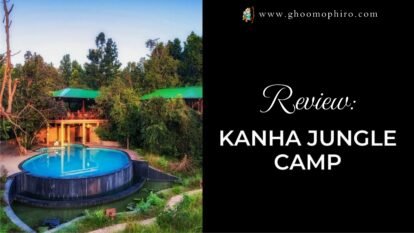The Nomadic Residential School in Puga, abode for nomadic children
Posted on December 8, 2016 by Ghoomophiro

The name Nomadic comes from a tribe based with Tibetan origins. The tribe has been ignored by the government for a very long time due to its reach with urban facilities but yet, they have found their way to get educated. A residential school was established in the year 2007 by the government of Himachal Pradesh and has been in talk for quite some time now.
The early days of Tribal School
The Nomadic residential school is located in a remote village called Puga. The school has been initiated with an intention of facilitating formal education to children who come from Kharnakpa and Changpa tribe. Both the tribes got Tibetan origins and lead a normal life with basic facilities. The tribes were not a great believer of formal education initially because of its imbalance, but life changed when the rules of poaching and hunting became strict and getting urbanized was the only option for survival. They simultaneously started understanding the value of formal education, which provides multiple ways of survival than depending on the traditional way of life.

Until a permanent school was established, the teachers used to travel with the tribe to conduct classes. The staff moved and set up camps in different locations to ensure enhanced schooling facilities for the nomads. As the days passed, the Nomadic residential school managed to have a decent infrastructure for villagers. Currently, the school provides food, clothes, boarding for free of cost for students who are between four and sixteen old. The Nomadic School provides boarding facilities, food and classes for students and most importantly in a warm and safe environment.
The school is an abode for 160 nomadic children who are ever-smiling and incredibly charming. As you pass them by in the school corridors, they will never fail to greet you and their gestures can almost melt your heart. The etiquettes can be credited to the excellent and dedicated staff who has not just helped in imparting them rudimentary education but also continue to lend a helping hand.

Education to both foreign and Indian tribes
The Changthang tribes are located on the border of India and Tibet. These tribes have a combination of 2 countries’ culture. They are located at a high altitude of 4500 meters bordering Tibet on one side and India on the other side. Officially, Changthang belongs to India and makes its living by raising yaks and goats. There has not been much formal education given to them for a long time and the tribes follow barter system still. The Nomadic residential school in Puga is trying to change the system by providing basic necessities with education.
Moving towards urbanization
Currently, The Nomadic school is a can be considered as a safe shelter for more than 100 children combining. Most of the children are from Kharnakpa Tribe and Champa tribe. Most of the children have seen their parents surviving in a traditional method by using natural resources for all kinds of activities. Children in the school get to see a combination of technology and the usage of natural resources, most of the children are adapting pretty quickly than the teacher’s expectation because of their experience on the field.
School still survives with its terrific weather conditions
It has been difficult for staff to manage the school under such weather conditions, the school has been effectively functionally because of the dedication from the staffs. The school does not conduct classes like any other educational institution in the country, it has its own way of teaching the academics and quantity of classes for every individual.
A span 5 to 6 months will not be suitable for traveling in and around Changthang due its heavy snow falls. The Nomadic school does take these things into consideration and does not conduct classes depending on the situation.




